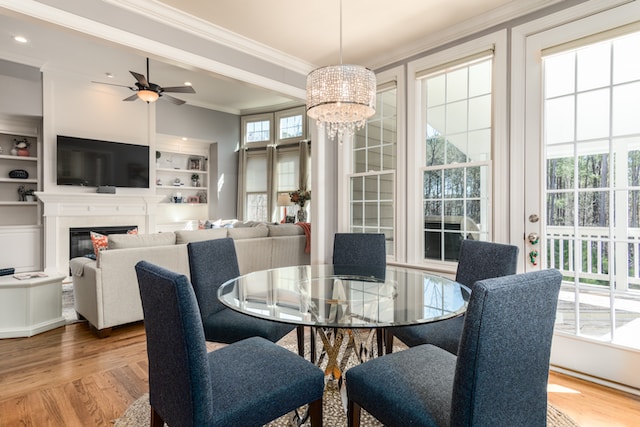Creating a home that is both functional and aesthetically pleasing is a common goal for many homeowners. The key lies not only in the choice of furniture and decor but also in the architectural principles governing the organization of space. In this blog post, we’ll delve into the top six principles that can transform your living space into a haven of comfort and style.
1. Declutter Regularly: The Foundation of Serenity
Decluttering is not just a trend; it’s a foundational principle that sets the stage for all other design elements to shine. Regularly purging your living spaces of unnecessary items not only creates a cleaner, more organized environment but also allows architectural features to take center stage. Consider decluttering as a form of editing, where each item in your home plays a crucial role. From the living room to the bedroom, every space benefits from a minimalist approach that emphasizes quality over quantity. However, the process of decluttering can be daunting. This is where professional services like Norfolk residential dumpster rental, can come to your aid. Renting a dumpster provides a convenient solution for disposing of unwanted items efficiently, allowing you to streamline your living space with ease. The key is to make decluttering a regular part of your routine, preventing the accumulation of unnecessary items that can dilute the impact of your home’s architectural features.
2. Embrace Natural Light: Illuminating Elegance
No architectural principle is as transformative as the use of natural light. Sunlight not only brightens your space but also creates a connection between the indoors and outdoors. Strategically placed windows, skylights, and glass doors can amplify the perception of space, making rooms feel larger and more inviting. When arranging your furniture, consider the path of natural light throughout the day, ensuring that key living spaces benefit from this abundant and free resource.
In bedrooms, opt for light-colored curtains that allow sunlight to filter through, creating a calming ambiance. In communal areas, such as the living room, position furniture to maximize natural light exposure without sacrificing functionality. This simple yet powerful principle enhances the architectural features of your home while positively influencing your well-being.
3. Flow and Functionality: Seamless Transitions
Architectural harmony extends beyond individual rooms; it involves creating a seamless flow between spaces. Ensure that the layout of your home facilitates easy movement, avoiding abrupt transitions that disrupt the natural progression from one area to another. This principle is particularly crucial in open-concept living spaces, where the kitchen, dining, and living areas coexist.
Consider the placement of furniture, the use of architectural elements like columns or room dividers, and the strategic arrangement of lighting to guide the eye through your home effortlessly. Achieving this flow not only enhances the overall aesthetics but also contributes to the practical functionality of your living space.
4. Material Consistency: Unity in Diversity
While variety can add interest to your home, a consistent use of materials establishes a sense of unity. From flooring to cabinetry, maintaining a cohesive palette of materials creates a harmonious environment. This doesn’t mean every surface needs to be identical, but rather that there should be a unifying thread that ties the various elements together.
For instance, if you have hardwood flooring in the living room, extending it to adjoining spaces or using complementary materials in a similar color palette ensures a smooth transition. Consistency in materials not only enhances the visual appeal of your home but also simplifies the decision-making process when selecting furniture and decor.
5. Architectural focal points: Showcasing Signature Elements
Every home has its unique architectural elements—be it a fireplace, a grand staircase, or a picturesque window. Identify these focal points and design your space to highlight them. Consider the placement of furniture and the use of lighting to draw attention to these distinctive features.
For example, if your living room boasts a stunning view, arrange your seating to maximize the visual impact. If there’s an intricately designed fireplace, arrange furniture to create a cozy conversation area that centers around this focal point. By emphasizing these architectural features, you not only enhance the character of your home but also create memorable, visually engaging spaces.
6. Balance: The Art of Proportion and Scale
Achieving balance in your home involves a careful consideration of proportion and scale. Oversized furniture in a small room or tiny decor pieces in a spacious area can disrupt the visual equilibrium. Strive for a balance in sizes and shapes, ensuring that each element complements the others. Consider the scale of your furniture about the room size. If you have high ceilings, opt for taller furniture to fill the vertical space. In smaller rooms, choose furniture with lower profiles to create a sense of openness.
The architectural principles outlined above serve as a guide to transforming your home into a space that is not only visually stunning but also functionally efficient. From regular decluttering to embracing natural light, each principle contributes to a holistic approach to home design. By incorporating these principles, you can create a living space that reflects your style while maximizing comfort and harmony.







